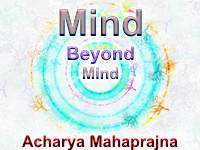
Once upon a time a traveller while he was crossing a desert was confronted by dacoits. The dacoits overpowered him after a scuffle and conducted a search of his person. They were surprised to find that he had only a single penny with him. They wondered why he had struggled so much for a single penny. The traveller remarked that he attached a great value to money. For him it was money, which mattered and not the amount of it. It was a question of values, of attachment to money.
It is the values we cherish which give a direction to our inclinations, thoughts and actions. We become interested in things because we value them. A change of values brings about a change in the direction of our interests and inclinations. This applies to Vratas and their opposites i.e., Avratas also. As a matter of fact, there is no difference between a Vrata and an Avrata. It is our areas of interest, which make them appear to be different from each other. If we value the soul as against the outer world, our interest in it becomes a Vrata. If on the other hand, we value the world outside us as against the soul, our interest in it becomes an Avrata. In plain language, Vrata means orientation towards the self. We orientate ourselves towards the outer world through the sense organs.
Consciousness in its pristine purity has no interests outside itself, but it is encircled by Kasaya or passions. Besides the passions, it is also encircled by our inclinations and dispositions. The former is called the Kasaya circle and the latter is called the Yoga circle. Light emanating from the soul, when it tries to break through the Kasaya circle, loses its original lustre, which is pure knowledge, and becomes alloyed with passions. Alloyed with passions, it takes the form of Samvedana or feeling. It becomes empirical knowledge. Pure knowledge is not alloyed with passions. Samvedana is dependent on the sense organs and the mind. Sense experiences produce attachments and aversions. They produce interests in the objects of the world. We like food because of its taste. As a matter of fact we live in world of sensations and most of our activities are only reactions caused by sensations. Knowledge produces actions, sensations produce reactions. Most of our actions are not actions but reactions. Knowledge exists by itself, sense experiences are dependent on the sensations. We react to situations and our reactions are determined by the kind of situation we meet. Our reactions are, therefore, conditioned by the objects in the world outside ourselves. Free thinking and free actions are possible only with reference to knowledge and not with reference to sensations and feelings. We like things because they produce pleasant sensations; we dislike them because they produce unpleasant sensations. The saying "behave like the scoundrel, if you meet one" is an extreme example of a life of reaction based on sensations.
There is no action but only reaction in a life based on sensations and feelings. Such a life creates inhibitions in our minds. We begin to behave like our adversaries. If some body harms us, we too would like to harm him. If some one praises us, we too would like to praise him. We try to do unto others what they do unto us. This is what is called a life of reactions as against a life of actions done consciously and freely. It is in this way that we develop reservations in our minds.
Why do people try to store and hoard things? Do they need whatever they hoard? Certainly not, hoarding is a kind of reaction. We become jealous of those who possess wealth and riches, which give their possessor social status and respect. We try to copy them. This is the result of the value we attach to sensations and feelings, which defile our consciousness. It is the result of the mixing up of the current of knowledge with the current of passions. Evil attracts us only because of the admixture of the two currents. The result is that we try to keep up appearances injudiciously. We do not like to be belittled and come to develop a sense of false prestige. It is said that if a snake has bitten a man, he would taste the bitter leaves of the Neem tree sweet. We begin to see things not as they are, but as we like to see them. An alloyed consciousness brings about a change in our attitude towards the world.
 Acharya Mahaprajna
Acharya Mahaprajna

